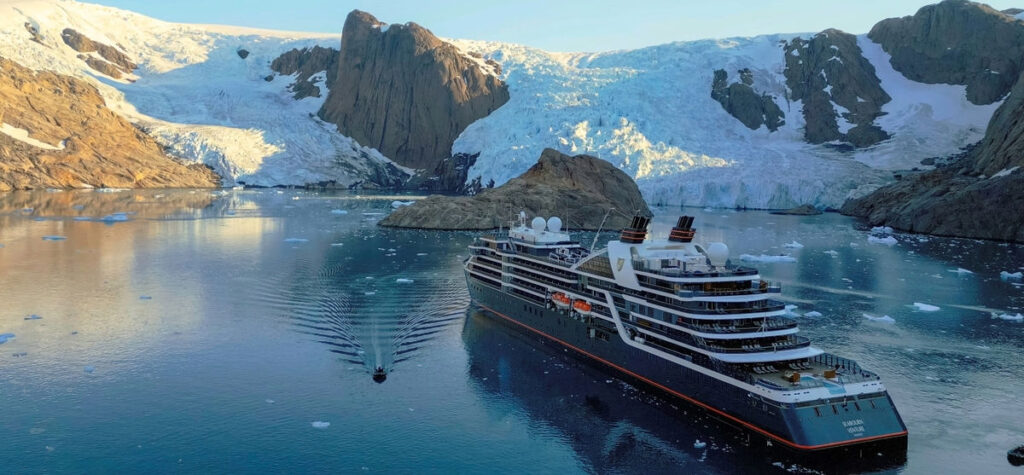This article was originally published in the August issue AGENTatHOME Magazine. Subscribe here to receive your free copy each month.
Travel advisors who have sold small-ships cruises (vessels that can accommodate fewer than 1000 passengers) say it is important to carefully qualify clients to ensure they are matched with the correct ship.
For example, a family with several kids may be looking for all the bells and whistles found on today’s megaships – waterslides, roller coasters, go-cart rides, a multitude of restaurants and more – and the young ones might be bored by a small ship with no children’s programs or amusement rides.
Small-Ship demographics
Greg Sutter said that most of our clients have sailed larger ships with children, or before 2020. Globe Treks. “Our clientele now is almost exclusively empty nesters, retired people who want more refined and relaxing experiences. And the smaller ships are perfect for that – and that trend seems to accelerate as clients age.”
Sutter, for example, noted that the baby boomers were a large market for adventure and expedition travel with smaller lines like Viking, National Geographic-Lindblad Expeditions Smithsonian Journeys, and HX.
He explained that “those travelers want an experience off the beaten paths and a unique one.”
Enjoy intimate, relaxed experiences
Amy Madson is a vacation specialist in Orlando, Florida. Madson & Associates/Dream Vacations, agreed.
“Small ships allow for a more intimate and relaxed cruise experience,” she explained, noting fellow passengers who are often seasoned travellers, open to forming new friendships. The smaller size of the ship allows passengers to spend time with each other, creating lasting friendships.
She said that the smaller ships focus more on destination enrichment and education compared to megaships which are all about “how much you can experience in a single week.”
She said that “big ships offer a lot of variety to all age groups, whereas small ships are more suited for a mature demographic in general.”
Asking the right questions
Sutter from Globe Treks begins the qualification process by asking clients what lines and ships they’ve previously sailed with to gain a general idea of what their needs are.
He said: “If clients don’t know about the smaller ships, they are taken through the different sizes and then we discuss the pros and cons, starting with the inverse size to price ratio.” “Pictures, videos, and audios speak volumes. This is part of the initial consultation.”
Madson, a Dream Vacations travel advisor, noted that good travel advisers will ask many questions and listen closely for clues.
“Many clients will come out and tell you that they do not want a big ship right from the start, but if they don’t, I listen for comments such as ‘not too busy or loud,’ ‘no Caribbean,’ ‘looking to be spoiled,’ ‘don’t want to fly to Europe’ and so on,” she said. Couples planning a celebration of a special milestone or those looking for an unusual destination are ideal candidates for a smaller ship experience. Often, the size of a ship is solely determined by the location the client wishes to visit. For example, Antarctica or Great Lakes.
Mary Walsh is a Dream Vacations owner from Spring Hill, Florida. She has also noticed an increase in clients choosing to cruise on small ships.
“I ask key questions to them: What ship have you sailed in the past and what did like or dislike?” She said. What is your budget for the cruise? What are your preferred ports? “How many days do you want to travel?”
Sutter believes that there are two types who prefer to travel on small ships.
“They are older travelers who prefer a less-intimidating, quieter experience away from megaships. Or they are the younger boomer group who enjoys an off-the-beaten-path adventure,” said he. “Both of these groups are more interested a quality small ship experience and will pay more for this opportunity.”
Subscribe to the newsletter to receive the latest updates, news and offers on travel. daily TravelPulse newsletter.


